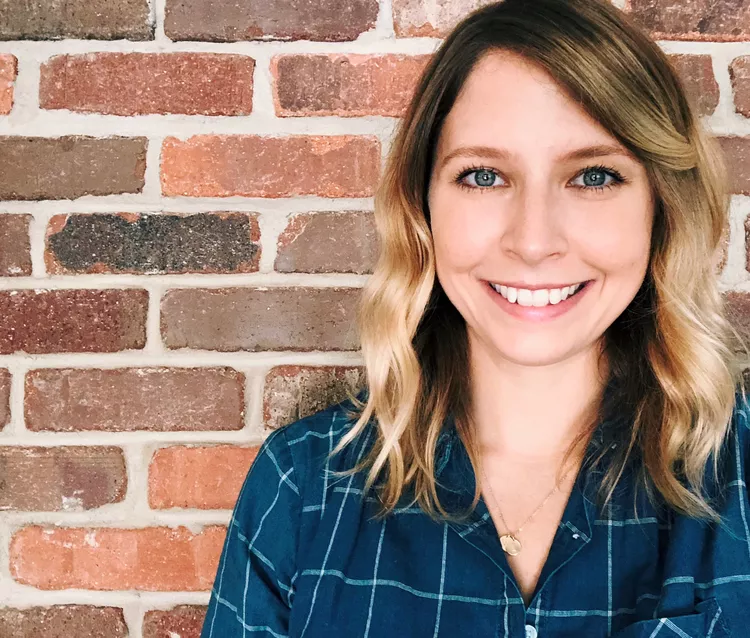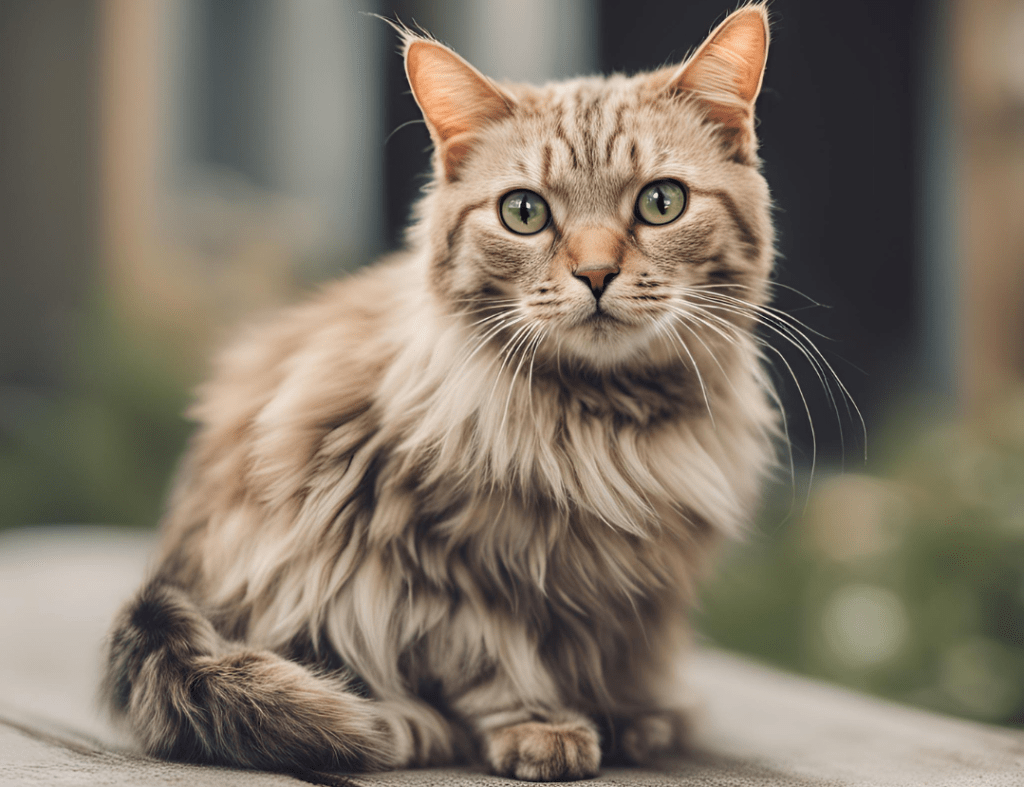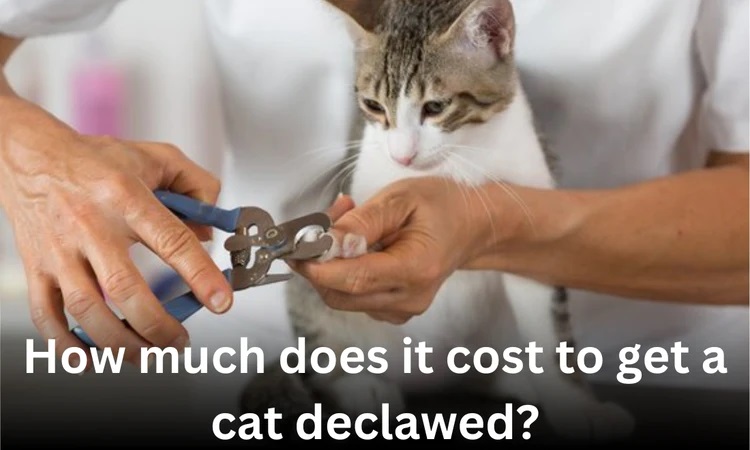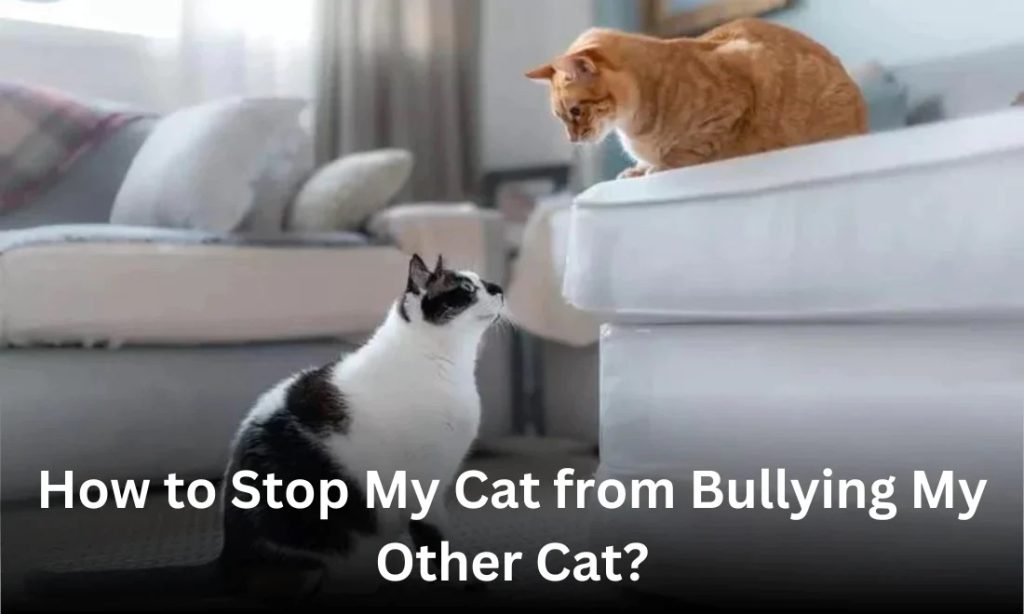Last updated on July 5, 2025
As pet owners, we all want options for the best products for our small pets. This means giving them the correct diet, litter boxes, accessories, furniture, and health and wellbeing. It also means selecting the correct products to enhance their existence.
Even simple items like toys and grooming supplies influence the welfare of our pets. The type of products that we buy greatly affects their well-being. This starts with choosing the right product they need in their lives and will improve their lives.

This ultimate guide will equip cat owners with the knowledge they need. It will provide them with tools to make informed decisions about the products they choose for their feline companions.
We will explore essential categories. These include nutrition, litter, grooming supplies, toys, and health care items. We will provide in-depth insights into what makes a product truly beneficial for cats. By the end of this guide, you’ll learn to evaluate product quality. You will also learn to interpret ingredient lists. You’ll be able to match items to your cat’s specific needs and preferences. Whether you’re a new cat parent or a seasoned owner looking to optimize your pet care routine.
- Understanding Your Cat's Needs
- Cat Food and Nutrition
- Cat Litter and Litter Boxes
- Cat Toys and Enrichment
- Cat Beds and Furniture
- Grooming Products
- Health and Wellness Products
- Cat Carriers and Travel Accessories
- Cat Safety and Security Products
- Sustainable and Eco-Friendly Cat Products
- Budgeting for Cat Care
- Conclusion
Understanding Your Cat’s Needs
Basic Needs of Cats
Make sure the basic needs of your feline are met. This is true whether you’re introducing a new cat into your home or already have established feline family members. It is crucial to meet the basic needs of your cat. Cats need more than just food and water. When they experience stress, it can impact their health and behavior. This stress can lead to issues like inappropriate urination, loss of appetite, inter-cat aggression, and more. By creating a cat-friendly environment and addressing these fundamental needs, you contribute to your cat’s overall well-being and happiness.
Understanding Cat Behavior
Cats are known for their unique behaviors, which can often be mysterious to their owners. Understanding these behaviors is important in selecting the right products. For instance, cats have an instinct to scratch, so providing a suitable scratching post is essential. Similarly, understanding your cat’s play patterns can help you choose toys that keep them engaged and happy.
Consideration of Cat’s Age, Breed, and Health
The age, breed, and health status of your cat significantly influence the products you should choose. Kittens, adults, and senior cats all have different nutritional needs and activity levels. Additionally, certain breeds may have specific requirements, like grooming tools for long-haired cats. If your cat has any health issues, consult with your veterinarian. They can help you select the best products that cater to these conditions.
Cat Food and Nutrition
Types of Cat Food
Choosing the right cat food is one of the most important decisions you’ll make for your cat. The main types of cat food are wet and dry. Wet food is often more palatable and hydrating, while dry food can be more convenient and help with dental health. Additionally, raw diets have become popular, though they need careful preparation to ensure they are nutritionally balanced.
Key Nutritional Requirements
Because cats are carnivores, therefore they need a diet rich in animal-based proteins. The important nutrients include proteins, fats, vitamins, and minerals. When choosing food, carefully read the labels to ensure that the ingredients meet these requirements. Look for named meat sources (like chicken or beef) as the primary ingredients rather than meat by-products.
Special Dietary Needs
Some cats have special dietary needs due to allergies, sensitivities, or health conditions. Grain-free and organic options are available for cats with specific dietary restrictions. If your cat has a medical condition, like kidney disease, your veterinarian may recommend a prescription diet tailored to their needs.
Choosing the Best Cat Treats
Giving treats to your cat can help strengthen the bond between you and your pet,” said Dr. Nicole Savageau, VMD, veterinarian at The Vets, a mobile veterinary service. Cat treats can also be used to train your pet, reward good behavior, and calm them down in stressful situations. So, look for treats that are high in protein and low in fillers. Some treats also offer dental benefits or added nutrients that can enhance your cat’s overall health.
Cat Litter and Litter Boxes
Types of Cat Litter
Cat litter is a must-have for all indoor cats. Cats naturally bury their waste. Pet owners, however, often have specific preferences regarding the type of litter they want their cats to use.
Clumping litters are popular because they make cleaning easier by forming solid clumps that can be scooped out. Non-clumping litters absorb moisture but need more frequent changes. Natural litter made from materials like corn, wheat, or recycled paper is an eco-friendly choice to traditional clay litter.
An important factor to consider when selecting litter is whether your cat is comfortable with it. Some cats may reject certain types of litter and will instead go outside the litter box. This is less than ideal for any household. Ultimately, the best choice of litter often depends on what your cat prefers and is willing to use.
Some people may temporarily use substitutes. These include dirt, sawdust, wood shavings, small animal bedding, chicken feed, sand, or moss. These are in addition to standard cat litter options. However, these alternatives come with drawbacks like unpleasant odors. They also pose issues with dust and the risk of parasites. This makes them unsuitable for long-term use.
Selecting the Right Litter Box
Litter boxes come in various sizes and designs, from basic trays to high-tech, self-cleaning models. When choosing a litter box, consider the size of your cat and the space available in your home. Covered boxes give privacy and help contain odors, but some cats prefer open trays. Automated litter boxes are convenient, especially for busy owners, but may need a larger upfront investment.
Litter Maintenance and Hygiene
Maintaining a clean litter box is crucial for your cat’s health and to prevent litter box avoidance. Scoop the litter box daily and perform a complete litter change and box cleaning regularly. Using litter deodorizers or odor-control litters can help manage smells, especially in multi-cat households.
Cat Toys and Enrichment
Types of Cat Toys
Toys are essential for your cat’s mental and physical health. Interactive toys like feather wands or laser pointers can engage your cat in play that mimics hunting. Puzzle toys stimulate their mind, offering a challenge that rewards them with treats. Solo play toys, like balls or stuffed mice, can keep your cat entertained when you’re not around.
Importance of Play and Mental Stimulation
Playtime is more than just fun for your cat—it’s a vital part of their well-being. Regular play helps your cat keep a healthy weight, improves their coordination, and reduces stress. Toys that challenge your cat mentally, like puzzle feeders, can prevent boredom and behavioral problems.
DIY vs. Store-Bought Toys
While store-bought toys offer variety and durability, DIY toys can be a cost-effective and fun choice. Simple household items like cardboard boxes, paper bags, or homemade fabric toys can be hours of entertainment. However, make sure that any DIY toy is safe and free of small parts that could be swallowed.
Rotating Toys and Keeping Playtime Fresh
Cats can quickly lose interest in toys if they’re always available. To keep playtime exciting, rotate your cat’s toys regularly. Introduce new toys or reintroduce old favorites that have been out of sight for a while. This keeps your cat engaged and eager to play.
Cat Beds and Furniture
Types of Cat Beds
Cats spend a significant part of their day sleeping, so providing a comfortable bed is essential. There are various types of beds. These include orthopedic options for older cats and heated beds for warmth. There are also self-warming beds that show the cat’s body heat. The choice of bed depends on your cat’s preferences and any special needs they may have.
Cat Trees and Scratching Posts
Cat trees and scratching posts are vital for your cat’s physical and mental health. It gives a place for your cat to scratch, which helps keep their claws healthy and marks their territory. Additionally, cat trees offer vertical space for climbing and perching, which many cats enjoy. When selecting a cat tree, consider its size, stability, and the materials used.
Space Considerations
When choosing cat furniture, it’s important to consider the space available in your home. Multi-functional furniture can be a great solution for small spaces. Examples include a cat tree that doubles as a shelf or a bed with hidden storage. Integrating cat furniture into your home’s décor can also make your living space more harmonious.
Grooming Products
Cat Brushes and Combs
Regular grooming is important for all cats, but especially for long-haired breeds. Brushes and combs help remove loose fur, reduce shedding, and prevent matting. Different brushes are designed for different coat types. Slicker brushes are for long hair. Bristle brushes are for short hair. Combs are for detangling.
Nail Clippers and Grinders
Trimming your cat’s nails is important to prevent overgrowth and potential injury. Nail clippers come in various styles, including scissors and guillotine types. Nail grinders file down the nail rather than cutting it. These can be a good choice for cats that are sensitive to clipping. Always choose tools designed specifically for cats and follow proper techniques to avoid hurting your cat.
Cat Shampoo and Conditioners
Bathing a cat is often a challenging task, but sometimes necessary. When selecting a cat shampoo, choose one specifically formulated for cats. Their skin is more sensitive than a dog’s. Conditioners can be used to keep a soft and shiny coat, especially for long-haired breeds. Avoid products with harsh chemicals and fragrances.
Dental Care Products
Oral health is often overlooked in cats, but it’s crucial for their overall well-being. Regular brushing with a cat-specific toothbrush and toothpaste can help prevent dental diseases. Dental treats and water additives can also contribute to maintaining your cat’s oral hygiene. However, they should not replace regular brushing.
Health and Wellness Products
Flea and Tick Prevention
Fleas and ticks are not only a nuisance but can also spread diseases to your cat. Preventive treatments include collars, topical solutions, and oral medications. It’s important to choose a product that is safe for cats, as some dog treatments can be toxic to them. Consult your vet to decide the best choice for your cat based on their lifestyle and health.
Effective flea and tick prevention is essential for your cat’s health and comfort. Choosing the right product can be challenging, but reviewing the top options can help. For a closer look at some of the best flea control products, check the detailed guide for Flea Control Products for Cats.
Cat Supplements
Supplements can play an important role in maintaining your cat’s health, especially if they have specific needs. Common supplements include joint support for older cats, omega-3 fatty acids for a healthy coat, and probiotics for digestive health. Always consult with your veterinarian before introducing new supplements to your cat’s diet.
If you’re unsure where to start, explore our detailed guide to choose the best supplements for your cat to help you make informed decisions about your pet’s nutritional and health requirements.
First Aid Kits and Emergency Products
Having a first aid kit tailored for cats can be invaluable in an emergency. It should include items like bandages, antiseptic wipes, tweezers, and a digital thermometer. Additionally, keeping emergency contact information for your veterinarian and a nearby animal hospital is crucial.
Veterinary Products
Your veterinarian may recommend specific products for your cat’s health needs, like prescription diets, medications, or specialized grooming tools. It’s important to follow your vet’s advice and use these products as directed to ensure your cat’s well-being.
Cat Carriers and Travel Accessories
Choosing the Right Cat Carrier
A good carrier is essential for trips to the vet, travel, or emergencies. Soft-sided carriers are lightweight and easy to store, while hard-sided carriers offer more protection. The carrier should be large enough for your cat to stand up, turn around, and lie down comfortably. Look for carriers with secure closures and good ventilation.
Traveling with Your Cat
Traveling with a cat can be stressful, but proper preparation can make it easier. Familiarize your cat with the carrier before the trip and bring along their favorite blanket or toy for comfort. During the journey, make sure your cat stays cool and hydrated. For longer trips, consider using a harness and leash for bathroom breaks.
Travel Accessories for Cats
Travel accessories like portable litter boxes can make the journey more comfortable for your cat. Products like collapsible food and water dishes can also help. Calming sprays are useful as well. Some cats may gain from anxiety-reducing products, like pheromone sprays or calming treats, especially during long trips.
Cat Safety and Security Products
Ensuring the safety and security of your feline friend is essential for a happy and healthy life. Here’s a look at various products designed to keep your cat safe, secure, and content.
Cat Collars and ID Tags
1. Breakaway Collars are essential for cats who venture outdoors or are prone to getting stuck. These collars are designed with a safety feature that allows the collar to break apart under pressure. This helps prevent injury if the collar gets caught on something. When choosing a breakaway collar, opt for one with a quick-release mechanism. The mechanism should open easily but stay securely fastened during normal activities.
2. GPS Trackers give peace of mind by allowing you to track your cat’s location in real-time. These devices attach to your cat’s collar and use satellite signals to pinpoint its whereabouts. Many GPS trackers come with additional features, like geofencing, which alerts you if your cat leaves a designated area. When selecting a GPS tracker, consider battery life, range, and ease of attachment.
3. Personalized Tags are crucial for identifying your cat if they get lost. These tags can be engraved with your contact information, ensuring that anyone who finds your cat can reach you quickly. Many modern ID tags are designed to be durable. They include additional features like QR codes that link to a pet profile with more detailed information.
Cat-Proofing Your Home
1. Window Screens are an essential safety measure. They prevent cats from falling or jumping out of open windows. These screens are designed to be sturdy yet flexible, allowing fresh air to circulate while keeping your cat safely inside. Look for screens that are easy to install and remove for cleaning purposes. Some options are adjustable to fit various window sizes.
2. Anti-chew sprays are useful. They protect your furniture, electrical cords, and other household items from curious kittens and cats. These sprays are formulated with bitter-tasting substances that deter cats from chewing or scratching. To use, apply the spray to the items you want to protect, and reapply as needed. Make sure that the spray is safe for use on the surfaces you treat. Also, make sure that it is non-toxic for your pet.
Outdoor Cat Enclosures
1. Benefits of Outdoor Time in a Safe Environment Outdoor cat enclosures, also known as catio systems, provide a secure way for cats to experience the outdoors. These enclosures reduce risks. These enclosures come in various sizes and designs, from small, single-level units to large, multi-level structures. The benefits of outdoor enclosures include:
- Exercise: Cats can engage in physical activity, which is important for their health and well-being.
- Mental Stimulation: Exposure to natural sights and sounds provides mental enrichment.
- Safety: Enclosures protect cats from hazards like traffic, predators, and toxic plants.
When choosing an outdoor enclosure, consider factors like size, durability, and ease of cleaning. Think about whether it allows your cat to enjoy various forms of enrichment, like climbing and scratching posts.
Monitoring Devices
1. Cameras Pet cameras allow you to keep an eye on your cat when you’re not at home. Modern pet cameras often come with features like live streaming, two-way audio, and motion detection. This lets you see what your cat is up to, talk to them, and even dispense treats remotely. When selecting a pet camera, consider the camera’s resolution, field of view, and integration with your smartphone or other devices.
2. Activity Trackers track your cat’s physical activity and can provide insights into their health and behavior. These devices attach to your cat’s collar and track metrics like steps taken, activity levels, and sleep patterns. Some trackers also offer health monitoring features, like tracking weight and body condition. Choose a tracker that is lightweight, waterproof, and has a long battery life.
3. Smart Devices Smart devices, including automated feeders and environmental monitors, can enhance your cat’s safety and well-being. Automated feeders ensure your cat receives regular meals even when you’re away, while environmental monitors can track temperature, humidity, and air quality to ensure a comfortable living environment. When selecting smart devices, look for those that are easy to set up and compatible with your home’s existing smart technology.
Sustainable and Eco-Friendly Cat Products
Sustainable and eco-friendly cat products are designed with both the environment and your pet’s well-being in mind. These products are made from renewable, biodegradable, and non-toxic materials that help reduce the ecological footprint left by traditional pet products. Whether it’s natural cat litter, organic food, or toys made from recycled materials, eco-friendly alternatives provide a safe and healthy option for your cat while supporting a greener planet.
Popular Eco-Friendly Cat Products
- Biodegradable Cat Litter: Made from natural materials like corn, wheat, or recycled paper, biodegradable cat litter is a top choice for reducing landfill waste and minimizing chemical exposure for your cat.
- Organic Cat Food: Packed with high-quality, natural ingredients, organic cat food is free from harmful additives and pesticides, promoting better health for your cat while supporting sustainable farming practices.
- Eco-Friendly Cat Toys: These toys are often made from recycled materials, and natural fibers like hemp or wool, and are free from toxic dyes, ensuring a safe and enjoyable playtime for your cat.
- Sustainable Cat Beds: Crafted from organic cotton, recycled polyester, or other sustainable materials, eco-friendly cat beds provide a comfortable resting spot while reducing environmental impact.
- Recyclable or Compostable Packaging: Many eco-conscious brands offer cat products packaged in recyclable or compostable materials, helping to cut down on plastic waste.
By incorporating these popular eco-friendly cat products into your routine, you ensure a healthier lifestyle for your pet while reducing your environmental footprint.
When choosing sustainable and eco-friendly cat products, you’re not only helping the environment but also ensuring the well-being of your feline friend. These products, made from natural, biodegradable materials, reduce the carbon footprint and offer safer alternatives for pets. To understand more about how these choices positively impact both your pet and the planet, check out the benefits of sustainable products, which explore the long-term advantages for both your cat’s health and our environment.
Budgeting for Cat Care
Caring for a cat can be a rewarding experience, but it’s important to plan for the financial responsibilities that come with pet ownership. You’ve probably already sought advice and looked at how to save money this year (we might even be telling you things you already know), but it never hurts to get advice. Speak to charities, your vet, friends, and family so that you’re informed on keeping your cat happy and healthy when money is tight.
This section will help you navigate the budgeting process, ensuring your feline friend receives the best care while keeping your finances in check.
Prioritizing Purchases
When it comes to cat care, distinguishing between must-haves and nice-to-haves is crucial for effective budgeting.
Must-haves:
- Nutritious food: High-quality cat food should be your top priority. It forms the foundation of your cat’s health and well-being.
- Litter and litter box: Essential for indoor cats and maintaining hygiene in your home.
- Basic medical care: Regular check-ups, vaccinations, and preventive treatments (e.g., flea and worm prevention) are non-negotiable.
- Water and food bowls: Durable, easy-to-clean options are best.
- Carrier: Necessary for safe transportation to vet appointments or during emergencies.
- Identification: A collar with an ID tag or microchipping for safety.
Nice-to-haves:
- Cat tree or climbing structures: While beneficial for exercise and scratching, these can be introduced gradually.
- Interactive toys: Simple household items can often suffice initially.
- Automated feeders or water fountains: Convenient but not essential.
- Specialized grooming tools: Basic brushes are often enough unless you have a long-haired breed.
- Cat beds: Many cats are content with a cozy spot on your furniture.
When budgeting, allocate funds to the must-haves first. Once these are covered, you can gradually incorporate nice-to-haves as your budget allows.
Tips for Saving Money
- Buying in bulk:
- Purchase larger bags of cat food or litter, which often come at a lower per-unit cost.
- Be cautious with perishables; ensure you can use them before they expire.
- Consider splitting bulk purchases with other cat owners to save money and prevent waste.
- DIY options:
- Create homemade toys using household items like cardboard boxes, paper bags, or crumpled paper.
- Craft a scratching post using sisal rope and a wooden post.
- Make your own cat treats using simple, cat-safe ingredients (always consult your vet first).
- Sales and discounts:
- Sign up for newsletters from pet supply stores to receive notifications about sales.
- Use apps or websites that compare prices across different retailers.
- Look for seasonal sales, especially during major shopping events like Black Friday.
- Consider joining loyalty programs at pet stores for additional savings and rewards.
- Online vs. in-store shopping:
- Compare prices online and in physical stores to find the best deals.
- Factor in shipping costs when shopping online; sometimes, local stores may be more cost-effective.
- Preventive care to save on long-term costs:
- Stay up-to-date with vaccinations and regular check-ups to prevent costly health issues.
- Maintain good dental hygiene to avoid expensive dental procedures later.
- Insurance considerations:
- Evaluate whether pet insurance could save you money in the long run, especially if your cat is prone to health issues.
When to Splurge
While budgeting is important, there are areas where investing in quality can save money and improve your cat’s quality of life in the long term.
- Food:
- High-quality cat food may be more expensive upfront but can prevent health issues and reduce vet bills over time.
- Consider your cat’s specific nutritional needs; sometimes, prescription diets are worth the extra cost for managing health conditions.
- Veterinary care:
- Regular check-ups and preventive care can catch issues early, potentially saving on costly treatments later.
- Don’t skimp on necessary medical procedures or medications.
- Litter and litter boxes:
- A good quality, clumping litter might be more expensive but can be more economical in the long run as it’s more effective and requires less frequent complete changes.
- Invest in a durable, easy-to-clean litter box to save time and ensure proper hygiene.
- Scratching posts:
- A sturdy, attractive scratching post can save your furniture from damage, potentially saving hundreds of dollars in repairs or replacements.
- Interactive toys:
- Well-made interactive toys can provide mental stimulation and exercise, potentially preventing behavior issues and obesity-related health problems.
- Carriers:
- A high-quality, secure carrier is essential for safe transportation and can last for years.
- Grooming tools:
- For long-haired breeds, investing in good grooming tools can prevent matting and reduce the need for professional grooming services.
Remember, the goal is to balance cost-effectiveness with your cat’s well-being. By prioritizing essential purchases, taking advantage of money-saving strategies, and investing wisely in key areas, you can provide excellent care for your feline friend without breaking the bank. Always consult with your veterinarian about your cat’s specific needs to ensure you’re making the best choices for their health and happiness.
Conclusion
Choosing the best products for your cat is a vital part of responsible pet ownership. By understanding your cat’s needs and preferences, you can select products that keep them healthy and happy. This also strengthens the bond you share. Always focus on quality and safety in the products you choose. Don’t hesitate to consult with your veterinarian for personalized recommendations. Remember, a well-cared-for cat is a content and loving companion.
FAQs About Choosing Cat Products
How do I choose the right food for my cat?
Choosing the right food depends on several factors:
- Age: Kittens, adults, and senior cats have different nutritional needs.
- Health status: Some cats may require special diets for medical conditions.
- Ingredient quality: Look for foods with high-quality protein sources as the first ingredient.
- Wet vs. dry food: Consider a mix of both for hydration and dental health.
- Brand reputation: Research brands known for quality and safety.
Consult with your veterinarian for personalized recommendations.
What type of litter box is best?
The best litter box depends on your cat’s preferences and your living situation:
- Size: Should be 1.5 times the length of your cat.
- Open vs. covered: Some cats prefer privacy, others like open boxes.
- Self-cleaning vs. traditional: Automatic boxes can be convenient but may scare some cats.
- Number: Provide one box per cat, plus one extra.
How often should I replace cat toys?
Replace cat toys when they show signs of wear and tear, such as:
- Frayed strings or loose parts that could be swallowed
- Broken or cracked plastic
- Visible dirt or grime that can’t be cleaned
Generally, inspect toys monthly and replace as needed, or every 1-3 months for heavily used toys.
Are there any cat products I should avoid?
Some products to be cautious about include:
- Toys with small, easily detachable parts
- Cheap plastic toys that may contain harmful chemicals
- Scented litters (some cats are sensitive to strong scents)
- Collars without quick-release mechanisms
- Low-quality food with excessive fillers or by-products
Always prioritize safety and quality when selecting cat products.
How do I choose the right scratching post?
Consider the following factors:
- Material: Sisal, cardboard, or carpet (observe what your cat prefers)
- Stability: Should be sturdy enough not to topple when used
- Height: Tall enough for your cat to fully stretch
- Location: Place in areas where your cat frequently scratches
Offer a variety of scratching surfaces to cater to different preferences.
What should I look for in a cat carrier?
Key features of a good cat carrier include:
- Size: Large enough for the cat to stand, turn around, and lie down
- Material: Hard-sided for protection, or soft-sided for comfort (if your cat is calm)
- Security: Strong zippers or latches to prevent escapes
- Ventilation: Multiple openings for air circulation
- Ease of cleaning: Removable, washable padding
- Airline approval: If you plan to travel by air
Tips for Troubleshooting Cat Products Common Issues
If cats not using the litter box, then
- Clean the box more frequently (at least once daily)
- Try different types of litter to find your cat’s preference
- Ensure the box is in a quiet, accessible location
- Rule out medical issues with a vet check-up
- Add more litter boxes in multi-cat households
- Consider removing covers if using covered boxes
For dietary adjustments:
- Introduce new foods gradually, mixing with current food
- Monitor for any adverse reactions (vomiting, diarrhea, loss of appetite)
- If changing due to health reasons, follow vet recommendations closely
- Warm wet food slightly to enhance aroma for picky eaters
- Use puzzle feeders to make mealtime more engaging
Reluctance to use scratching posts:
- Place posts near furniture your cat currently scratches
- Use catnip or treats to attract your cat to the post
- Demonstrate scratching behavior yourself
- Try different materials (sisal, cardboard, carpet) to find preference
- Ensure the post is stable and tall enough for a full stretch
If your pet not interested in toys:
- Rotate toys regularly to maintain novelty
- Try interactive toys that move or make noise
- Engage in play sessions using wand toys
- Experiment with different types (balls, crinkle toys, catnip toys)
- Consider food puzzle toys for mental stimulation
Stress during travel or vet visits:
- Use pheromone sprays in the carrier
- Leave the carrier out in the home to desensitize your cat
- Place familiar bedding or toys in the carrier
- Cover the carrier with a light cloth during transport
- For vet visits, choose a cat-friendly clinic if possible
Water intake concerns:
- Try a cat water fountain to encourage drinking
- Place multiple water bowls throughout the house
- Serve wet food to increase moisture intake
- Ensure water bowls are wide enough to prevent whisker fatigue
- Clean water bowls regularly and refresh water daily
Remember, every cat is unique. What works for one may not work for another. Always observe your cat’s behavior and preferences, and consult with a veterinarian for persistent issues or health concerns.

Christina Donnelly is a writer, editor, and animal welfare advocate who loves to spread cheer in the form of cute animal photos and interesting animal facts.
Christina has worked in digital media for over a decade. Her current 9-to-5 is with Anthem Health, where she works as a content lead.
- Title: Writer
- Education: Marist College
- Location: Brooklyn, New York
- Expertise: Cats





